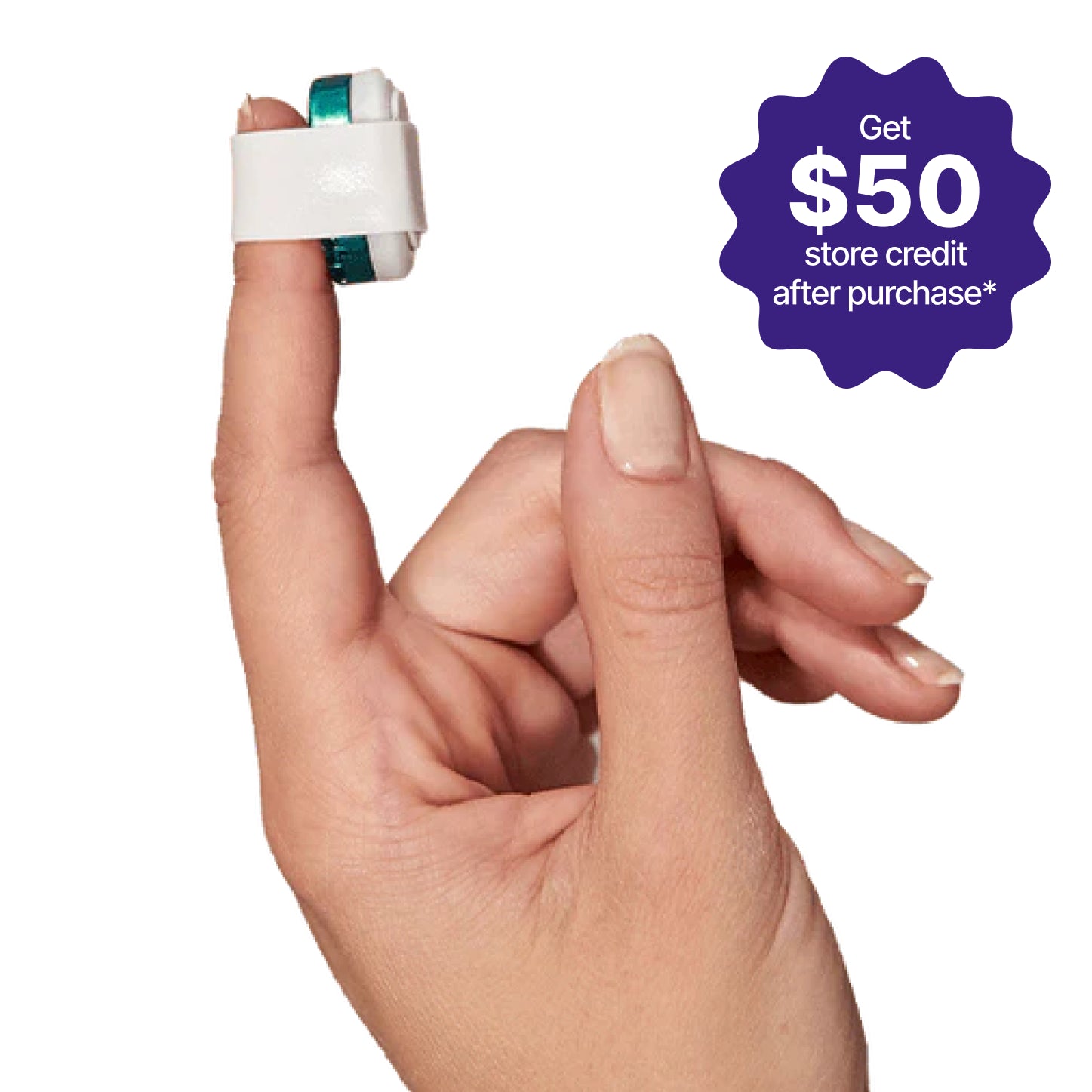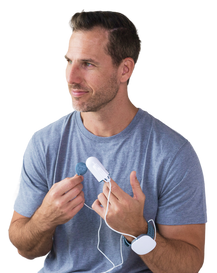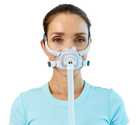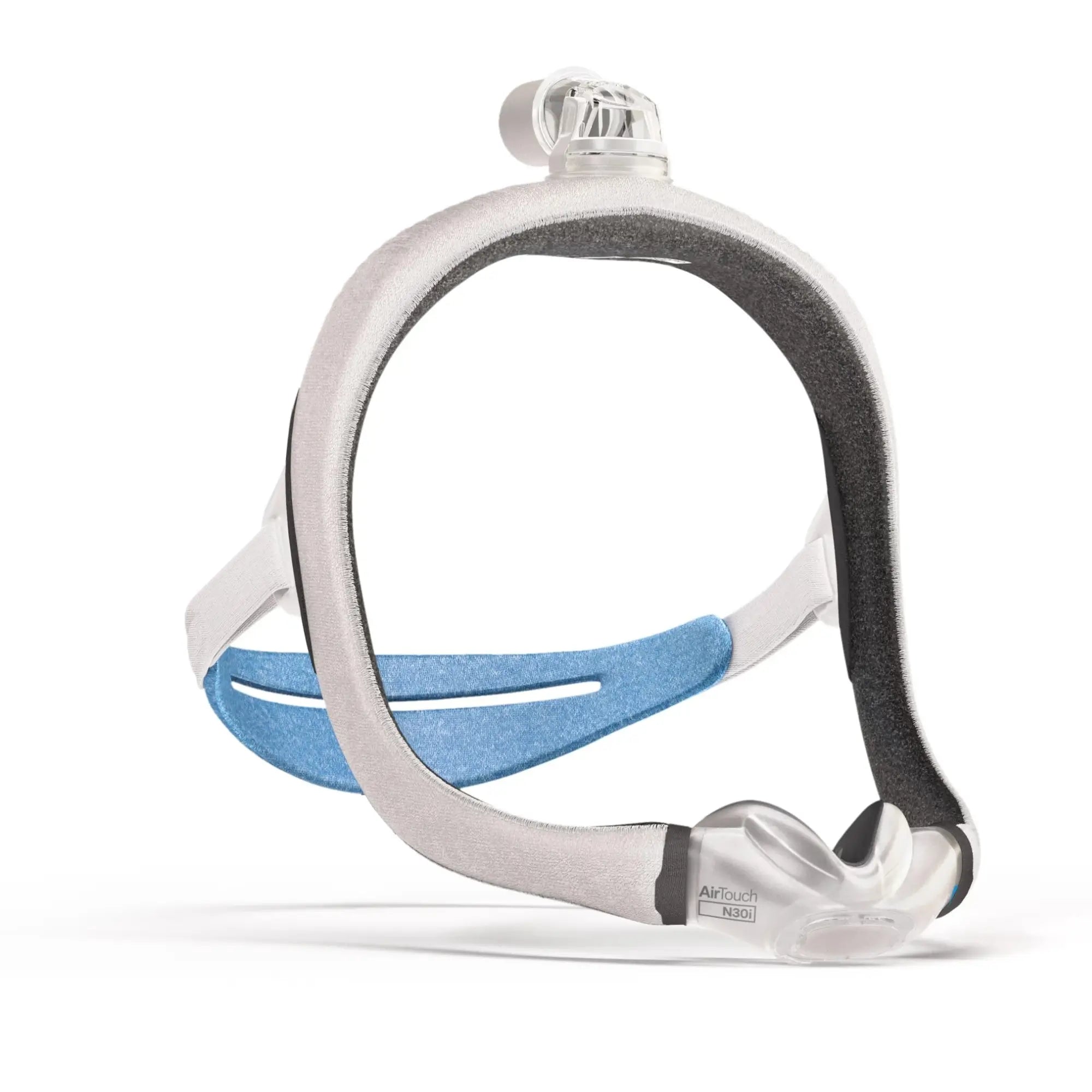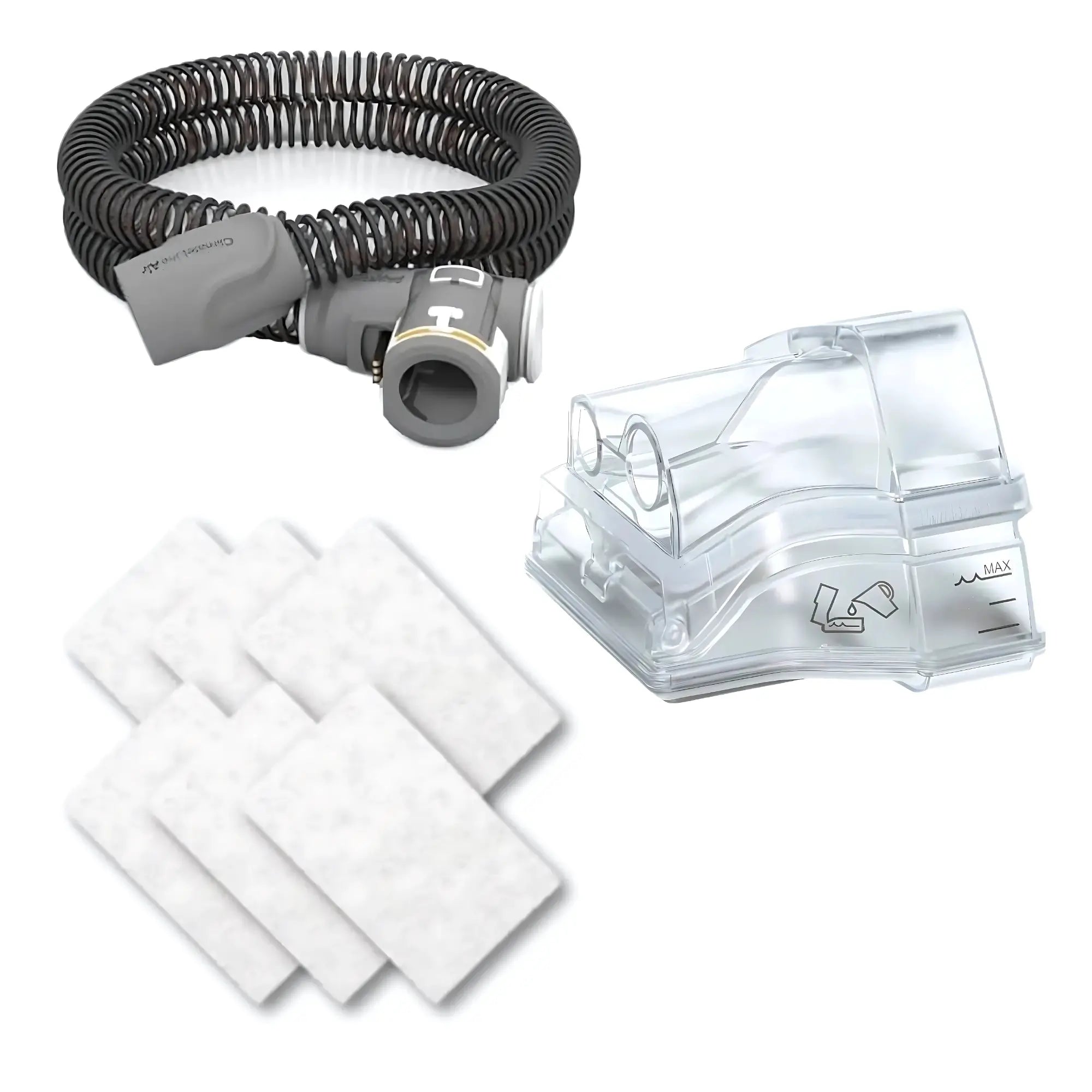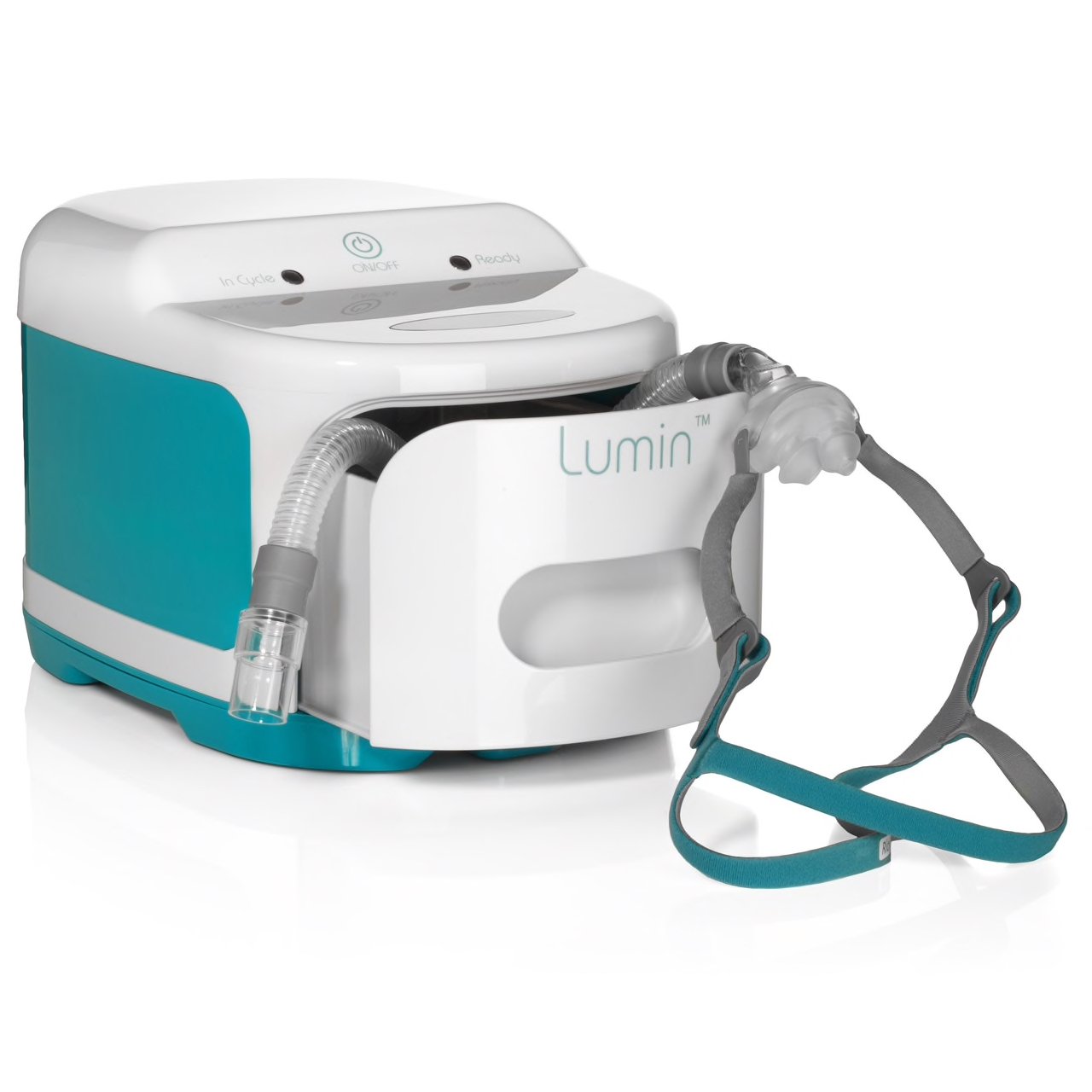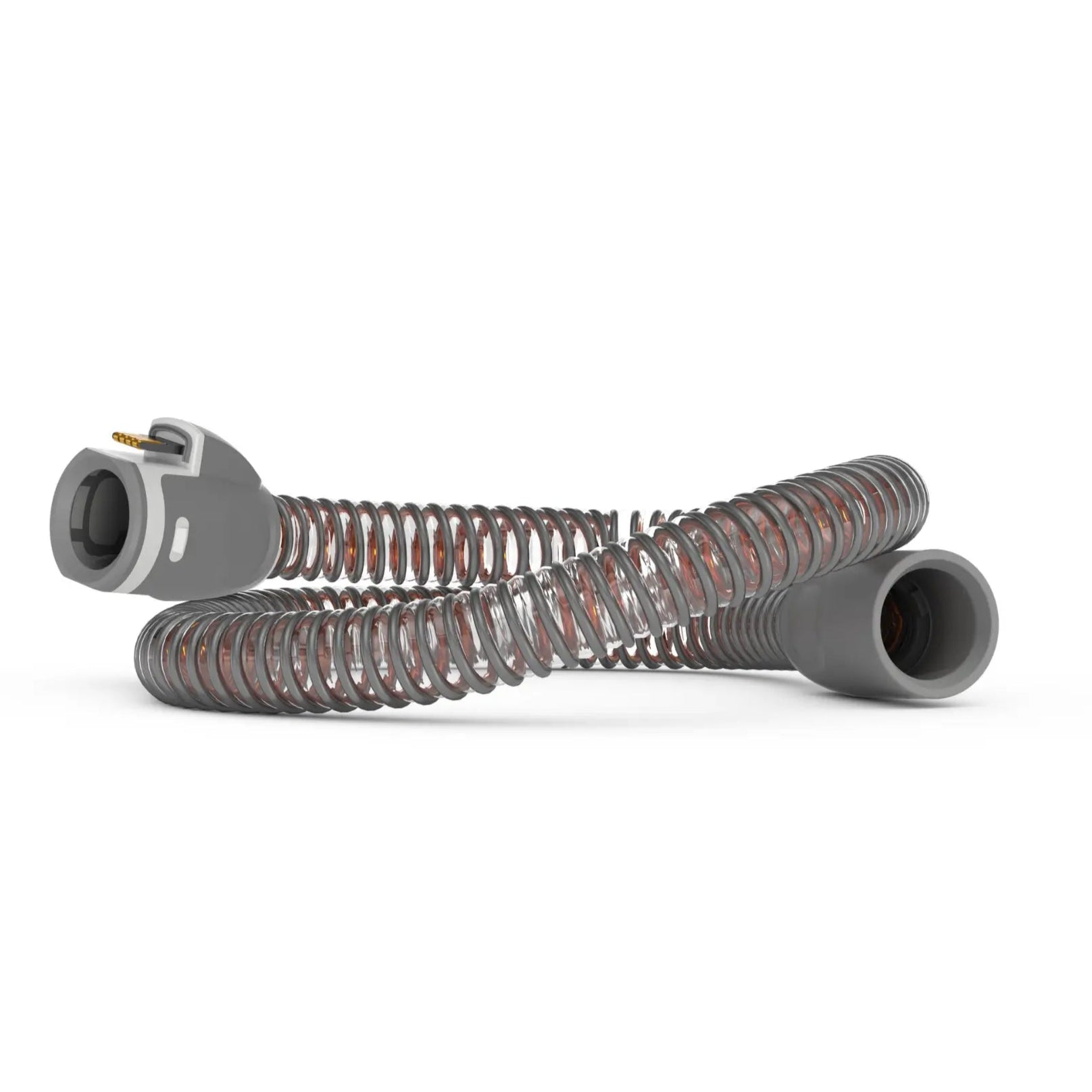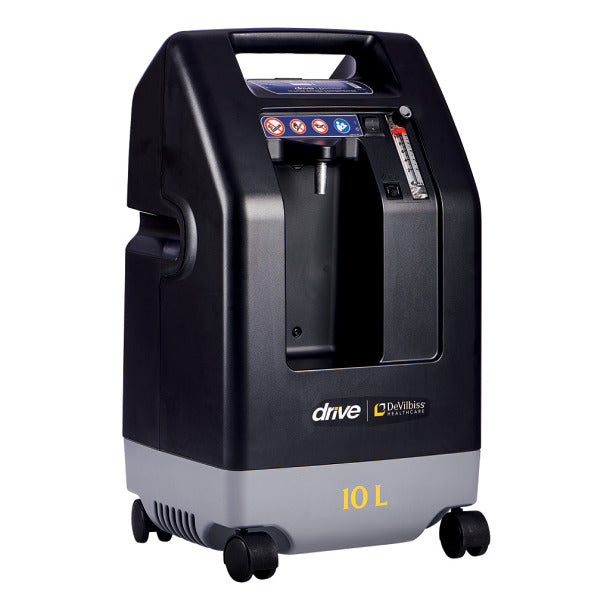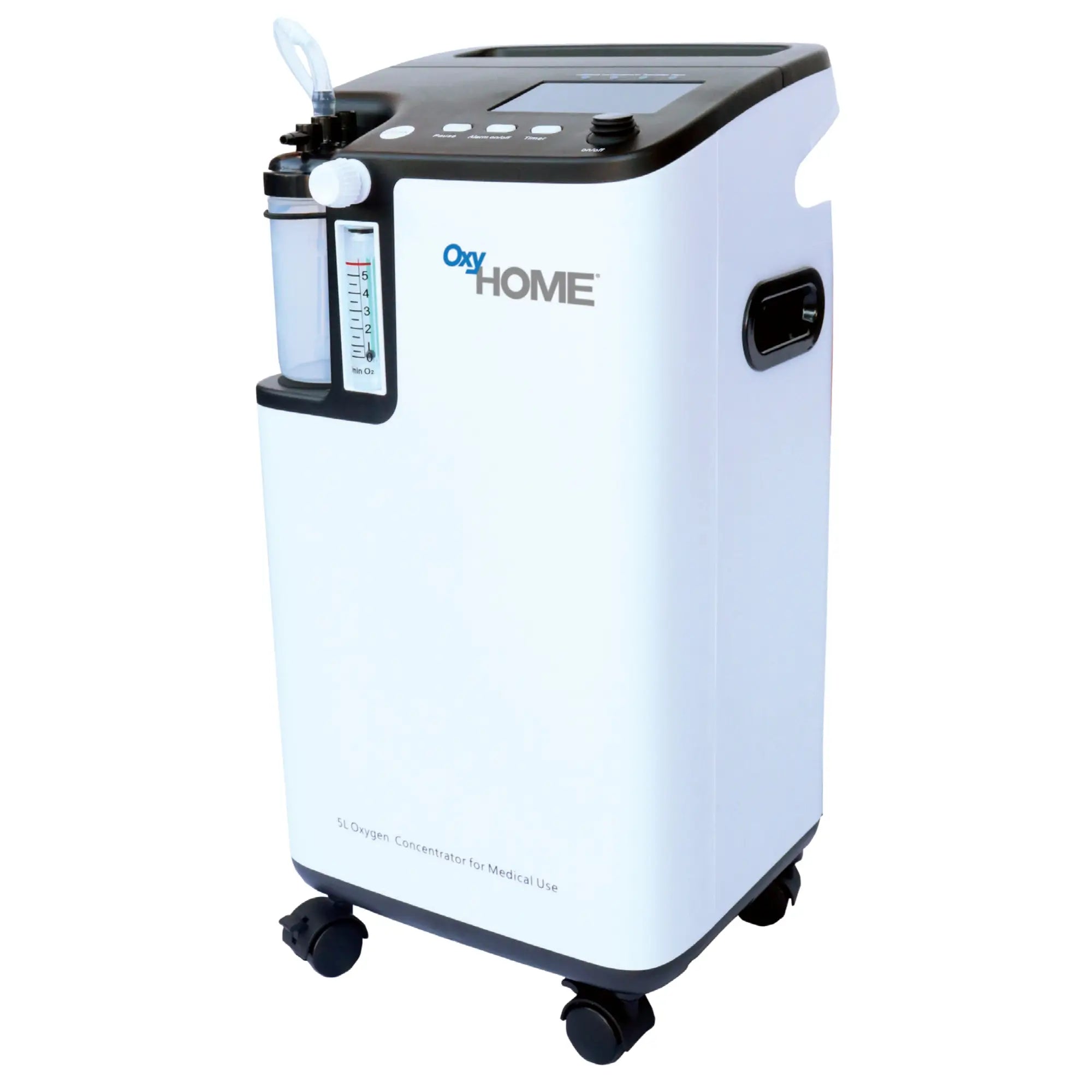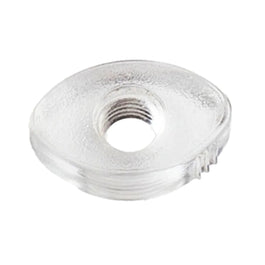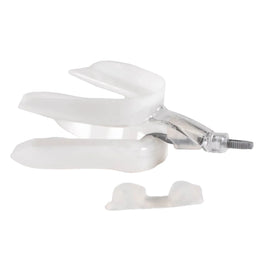Yes, oral appliances can effectively treat mild to moderate obstructive sleep apnea (OSA). They are a clinically proven and comfortable alternative for many people who cannot tolerate CPAP therapy.
Oral appliances are custom-fit dental devices that reposition the jaw or tongue to maintain an open airway during sleep. This clinical treatment, known as Oral Appliance Therapy (OAT), is recognized by the American Academy of Sleep Medicine (AASM) and the American Academy of Dental Sleep Medicine (AADSM) in their joint clinical practice guideline for oral appliance therapy.
In this guide, we will explore exactly how these appliances work, what clinical studies show about their effectiveness, who they are ideal for, and potential side effects. We will also cover proper care routines, featuring insights and examples from Sleeplay’s Oral Appliances Collection.
What Are Oral Appliances for Sleep Apnea?
Oral appliances are custom-fit devices used in Oral Appliance Therapy (OAT) to treat obstructive sleep apnea (OSA). They work by repositioning the jaw or tongue to maintain an open airway while you sleep. These are not over-the-counter mouthguards; they are medical devices custom-fitted by a qualified dentist or sleep specialist. This treatment is backed by the AASM and AADSM Clinical Practice Guideline for Oral Appliance Therapy.
Oral appliance therapy is typically prescribed for several key situations. These include treating mild to moderate OSA, addressing primary or habitual snoring, and serving as an alternative for patients who have difficulty with CPAP intolerance or non-compliance. These are FDA-cleared medical devices prescribed after a formal sleep study. A specialist then adjusts the appliance over time to find the most effective and comfortable jaw position. You can explore a variety of these solutions in Sleeplay’s Oral Appliances Collection.
Oral appliances fall into two main categories:
-
Mandibular Advancement Devices (MADs): These are the most commonly prescribed type for sleep apnea. A MAD works by gently moving the lower jaw (mandible) forward and slightly down. This movement increases the space behind the tongue and soft palate, effectively preventing the airway from collapsing.
-
Tongue Retention Devices (TRDs): These devices stabilize the tongue in a forward position using a small suction bulb. By preventing the tongue from falling back into the throat, a TRD keeps the airway open. They are often a valuable alternative for patients who may not be good candidates for a MAD, such as individuals with limited dentition.
|
Device Type |
How It Works |
Common Use |
Example Product |
|
Mandibular Advancement Device (MAD) |
Moves the lower jaw slightly forward to open the airway and prevent collapse. |
Mild–Moderate OSA, habitual snoring |
|
|
Tongue Retention Device (TRD) |
Holds the tongue in position with gentle suction to prevent airway blockage. |
Alternative for moderate OSA or patients unsuitable for MADs |
In short, both MADs and TRDs are professional, FDA-cleared solutions tailored to a patient's specific needs. Now, in the next section below, we’ll take a closer look at the mechanical process of how these devices function to keep you breathing all night easily.
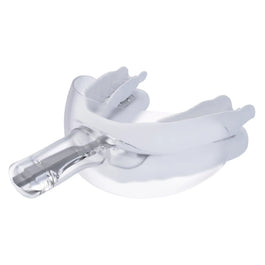
myTAP Oral Appliance For Snoring & Sleep Apnea
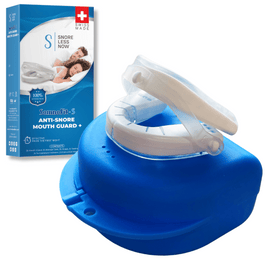
Somnofit-S Anti-Snore Mouth Guard+ by SnoreLessNow
How Do Oral Appliances Work?
Oral appliances work by gently repositioning the lower jaw or tongue to prevent airway collapse and maintain steady airflow during sleep. This mechanical action stabilizes the upper airway, which reduces breathing interruptions and helps improve oxygen saturation.
The physics behind this is straightforward. Mandibular Advancement Devices (MADs), the most common type, move your lower jaw slightly forward. This simple shift pulls the tongue and soft palate away from the back of your throat, increasing the pharyngeal space and maintaining airway patency. Tongue Retention Devices (TRDs) use gentle suction to hold the tongue in a forward position, preventing it from blocking the oropharynx. Both methods reduce airway resistance. As research in the Journal of Dental Sleep Medicine highlights, this advancement helps reduce pharyngeal collapsibility and restore more stable airflow during sleep.
This physical change has significant physiological effects. By increasing the airway's cross-sectional area, the device allows air to flow more freely. This reduces the vibration that causes snoring and, more importantly, prevents the airway blockages (apneic events) that define sleep apnea. A 2015 meta-analysis published in the Journal of Dentistry confirmed this, finding that oral appliances significantly improved oxygen levels and reduced the apnea-hypopnea index (the measure of sleep apnea severity).
These devices are not a one-size-fits-all solution; their effectiveness relies on precise calibration. A qualified dentist will gradually adjust the appliance, advancing the jaw in tiny increments to find the perfect position that opens the airway without causing discomfort or TMJ strain. This professional fitting ensures consistent airflow. For example, devices like the myTAP Oral Appliance are designed for this exact kind of progressive adjustment under professional supervision.
Mechanism Overview
|
Mechanism Component |
How It Works |
Physiological Effect |
|
Jaw Advancement (MADs) |
Moves the mandible slightly forward |
Increases airway space behind the tongue and soft palate |
|
Tongue Stabilization (TRDs) |
Holds tongue in a fixed forward position |
Prevents airway collapse in the pharyngeal region |
|
Airway Pressure Distribution |
Maintains laminar airflow and reduces resistance |
Improves oxygen flow and reduces snoring |
|
Custom Adjustment |
Gradual repositioning of the jaw by a dentist |
Optimizes airway opening and comfort |
In summary, oral appliances improve breathing mechanics by physically stabilizing the airway, unlike CPAP, which uses air pressure. Now, let's examine what the clinical studies say about how effective this approach is for treating sleep apnea.
Are Oral Appliances as Effective as CPAP?
Oral appliances can be as effective as CPAP for many people with mild to moderate obstructive sleep apnea, improving symptoms and sleep quality. However, CPAP remains the gold standard for severe cases. The two therapies simply work differently. Auto-Adjusting CPAP Machines use pressurized air to keep the airway open, while oral appliances physically reposition the jaw or tongue to achieve the same goal naturally.
Clinical evidence shows OAT is a powerful tool. A 2022 meta-analysis covering 42 studies found that oral appliances significantly reduced the apnea-hypopnea index (AHI) across all OSA severity levels. Another PubMed meta-analysis found that oral appliances improved minimum oxygen saturation and reduced respiratory arousals by more than 9 events per hour. While CPAP is technically better at eliminating every event (efficacy), a study in the Journal of Dental Sleep Medicine pointed out that oral appliances often deliver similar real-world outcomes (effectiveness) because people are more likely to use them.
This brings up the most important factor: adherence. CPAP is only effective if you wear it, and many find the mask and airflow difficult to tolerate. Oral appliances are quiet, portable, and less intrusive. This makes a huge difference in long-term use. A 2023 meta-analysis in the Journal of Clinical Sleep Medicine found that OAT users averaged over 1.5 more hours of nightly use than CPAP patients. Consistent nightly use, even with a device like the ResMed AirSense 11 AutoSet CPAP Machine, is the key to successful treatment.
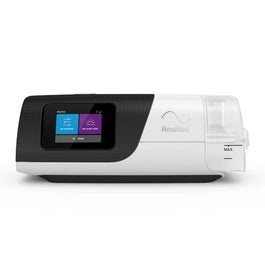
ResMed AirSense 11 AutoSet CPAP Machine
Ultimately, the best treatment depends on your specific condition. For mild to moderate OSA, oral appliances are often an excellent primary therapy. A PMC clinical review found that patients with moderate OSA saw comparable improvements in daytime sleepiness and sleep quality from both OAT and CPAP. For severe OSA, the powerful airflow from a CPAP or even BiPAP system is generally more reliable for keeping the airway fully open.
Therapy at a Glance: Oral Appliance vs. CPAP
|
Feature |
Oral Appliances (OAT) |
CPAP Therapy |
|
Mechanism |
Repositions jaw or tongue to prevent airway collapse |
Delivers continuous pressurized air to keep the airway open |
|
Best for |
Mild–Moderate OSA, snoring, CPAP-intolerant patients |
Moderate–Severe OSA or complex cases |
|
Adherence |
High (average >6 hrs/night) |
Variable (average 4–5 hrs/night) |
|
Key Advantage |
Comfort, portability, quiet operation |
Strong efficacy, precise airflow control |
|
Available at |
Both oral appliances and CPAP are validated by strong clinical evidence. The best choice depends on your sleep apnea severity, personal comfort, and which therapy you will use consistently. Next, we’ll look at who benefits most from oral appliance therapy and how to know if you are an ideal candidate.
Who Are the Best Candidates for Oral Appliance Therapy?
Oral appliances are most effective for adults with mild to moderate obstructive sleep apnea or chronic snoring, especially when CPAP is not tolerated or adherence is difficult. This therapy is typically recommended after a formal sleep study confirms your diagnosis and is always managed under professional supervision. You can find specific medical criteria in the AASM and AADSM Clinical Practice Guideline for Oral Appliance Therapy.
Doctors usually prescribe this therapy for specific clinical scenarios. It is the go-to option for mild to moderate OSA where the Apnea Hypopnea Index falls between 5 - 30 events per hour. It is also an excellent solution for primary snoring without apneas or for patients who simply cannot tolerate CPAP despite trying different masks. Sometimes, it serves as a solution for residual OSA after surgery or as a secondary treatment combined with weight management programs. You can see these varied solutions in our Oral Appliances Collection.
Your physical anatomy plays a huge role in the success of this treatment. To wear a mandibular advancement device, you generally need healthy teeth (usually at least 10 per arch) to anchor the device securely. Your temporomandibular joints (TMJ) must be healthy and free of active pain or dysfunction. Research suggests that patients with a Body Mass Index (BMI) < 35 often see the best results because the airway mechanics are more favorable. These devices work best when airway collapse is caused by tongue or jaw position rather than by severe soft-tissue issues deep in the throat.
However, OAT is not a replacement for CPAP in every case. Standard positive airway pressure remains the better choice for specific situations:
-
Severe OSA (AHI > 30) requiring continuous pressure support.
-
Central or complex sleep apnea where airway collapse is not the only issue.
-
Patients with significant obesity-related airway restriction.
-
Individuals who require humidified or travel-adaptable airflow systems like the ResMed AirCurve 11 VAuto or the portable Transcend Micro Auto CPAP.
Candidate Overview
|
Patient Profile |
Recommended Therapy |
Key Considerations |
|
Mild–Moderate OSA |
Oral Appliance Therapy (OAT) |
Jaw or tongue-based obstruction, good dentition, BMI < 35 |
|
Severe OSA |
Continuous pressure is required for airway stability |
|
|
Chronic Snoring |
Oral Appliance or Positional Device |
Ideal for non-apneic snorers seeking comfort and portability |
|
CPAP-Intolerant Patients |
Oral Appliance |
Improved adherence and travel convenience |
|
Mixed/Complex Sleep Apnea |
Requires adaptive pressure and physician follow-up |
Choosing the OAT or CPAP depends on your apnea severity, dental health, and personal preference. Next, we’ll cover possible side effects and how dental adjustments are monitored to ensure long-term comfort and safety.
Possible Side Effects and Dental Changes
Most oral appliance side effects are mild and temporary, such as jaw stiffness, drooling, or tooth discomfort, though long-term use can cause gradual dental or bite changes if not regularly monitored. These effects are usually reversible with proper adjustment and follow-up by a dentist trained in sleep medicine, as detailed in a Journal of Clinical Sleep Medicine systematic review.
During the first few weeks of therapy, patients often experience short-term adaptation effects as the mouth gets used to the device. Common issues include jaw or muscle soreness due to the mandibular advancement and tooth pressure or gum sensitivity, which usually improve as the device is fine-tuned. Some users may also notice dry mouth or excess salivation caused by the change in mouth positioning, along with mild morning misalignment that typically resolves after a few minutes of movement. To help with this, dentists often recommend performing gentle jaw exercises upon waking or using a specific alignment tool like the AM Aligner Post-Sleep Apnea Jaw Realignment to restore normal bite position after nighttime use.
While less common, long-term use can lead to structural shifts. According to a systematic review published in the journal Personalized Medicine (2022), long-term OAT use can cause mild dental changes such as decreased overjet and overbite or minor tooth inclination. It is important to note that these changes occur gradually over several years and are generally not clinically significant when patients are monitored regularly. Proper fitting, gradual titration, and periodic dental checkups (every 6–12 months) significantly reduce the risk of lasting skeletal alteration, especially when using adjustable devices like the myTAP Oral Appliance.

myTAP Oral Appliance For Snoring & Sleep Apnea
Dentists manage these risks through proactive care. At follow-up appointments, they perform occlusal monitoring and jaw alignment tests to catch any shifts early. Devices may be re-adjusted or remolded to maintain comfort and reduce tension on the jaw. Periodic assessments ensure that TMJ function and bite alignment remain stable, and some specialists even use 3D digital scans to track dental positioning over time. The success of long-term OAT depends on this collaborative care between sleep physicians and dental specialists, ensuring that both airway function and oral health are maintained.
Overview of Reported Effects and Management Strategies
|
Type of Effect |
Typical Symptoms |
Duration |
Recommended Management |
|
Short-Term (Adaptation) |
Jaw stiffness, drooling, tooth pressure |
1–3 weeks |
|
|
Dry Mouth / Salivation |
Altered saliva flow |
Temporary |
Hydration, mild CPAP-compatible moisturizers |
|
Long-Term (Dental Changes) |
Decreased overjet/overbite, minor tooth shift |
Gradual (years) |
Regular dental follow-ups, remolding, bite realignment |
|
TMJ Discomfort |
Clicking or mild tension |
Intermittent |
Adjust advancement, avoid excessive protrusion |
To minimize complications and ensure therapeutic effectiveness, patients should schedule evaluations every 6–12 months. During these visits, dentists reassess the fit, bite alignment, and wear condition of the appliance itself. Consistent follow-up is key to keeping the treatment safe and effective. You can find products to help maintain your device in our Oral Appliances Collection.
With professional monitoring and proper care, oral appliances remain a safe, effective long-term treatment for sleep apnea. Next, we’ll look at maintenance, cleaning, and replacement schedules to extend their lifespan.

Maintenance, Cleaning & Replacement
Daily cleaning and regular replacement of oral appliances prevent bacterial buildup, odor, and material wear, ensuring a consistent fit and effective sleep apnea treatment. While care routines differ slightly by appliance type (mandibular advancement vs tongue retention), all devices in our Oral Appliances Collection follow the same hygiene principles.
To maintain hygiene and prevent discoloration, follow this simple daily cleaning routine:
-
Rinse immediately after removal using lukewarm water to remove debris and saliva.
-
Clean gently with a mild CPAP soap or specific cleaning tablets such as Snugell CPAP Cleaning Tablets.
-
Use a soft brush, like the Purdoux CPAP Hose Brush Set, to remove buildup from internal crevices or joints.
-
Avoid toothpaste, alcohol, or harsh detergents, as they can damage thermoplastic or acrylic materials.
-
Rinse thoroughly and air-dry, avoiding direct sunlight or heat sources that could warp the device.
For long-term hygiene, a deeper clean is necessary. Once a week, soak the device in a specialized cleaning solution for 10–15 minutes using products like the Snugell CPAP Cleaner Spray - Alcohol Free with Aloe Vera. Never use boiling water or put the device in a dishwasher, as excessive heat may deform the oral device. After cleaning, always store it in a ventilated case to prevent bacterial growth. You can find appropriate cleaning tools in our CPAP Cleaning Supplies Collection.
Proper storage is essential, especially for frequent travelers. Store your oral appliance in a hard, breathable case to prevent accidental deformation. Also, never place it in an enclosed container immediately after cleaning; let it fully dry first. If you are often on the go, look into portable cleaning tools such as the Snugell Travel CPAP Cleaning Set. Remember that oral appliances are compact and lightweight, making them far easier to carry than full systems like the Transcend Micro Auto CPAP Machine.
Over time, oral appliances lose their structural integrity and precision fit due to mechanical stress and exposure to saliva and cleaning agents. Refer to the table below for recommended replacement intervals:
|
Component |
Recommended Replacement Interval |
Notes / Maintenance Tips |
|
Oral Appliance Body |
Every 1–2 years |
Replace when discoloration, cracking, or deformation occurs. |
|
Thermoplastic Liners / Inserts |
Every 6–12 months |
Refit if device feels loose or seal weakens. |
|
Storage Case |
Every 12 months |
Clean regularly and replace if odor or residue appears. |
|
Jaw Alignment Tools |
As needed |
Replace if worn out or if bite shifts noticeably. |
Follow-up appointments are also a critical part of maintenance. Sleep dentists should reassess fit and alignment every 6–12 months. Adjustments are often made during these visits to compensate for gradual dental movement or minor wear. Consistent maintenance preserves both therapeutic performance and comfort during nightly use, often aided by tools like the AM Aligner Post-Sleep Apnea Jaw Realignment.
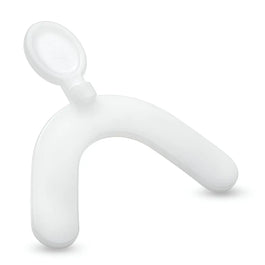
AM Aligner Post-Sleep Apnea Jaw Realignment
Consistent cleaning and timely replacement keep oral appliances safe, hygienic, and effective. Having the right tools will also make maintenance simple to integrate into your nightly routine. Now, let’s proceed to address some common questions about oral appliances and clarify how they compare with other sleep apnea treatments.
FAQs
Do oral appliances really work for sleep apnea?
Yes, they are clinically proven to treat mild to moderate obstructive sleep apnea effectively. By stabilizing the jaw and keeping the airway open, they significantly reduce sleep interruptions and improve oxygen levels for many patients.
How do oral appliances help keep the airway open during sleep?
These devices work by mechanically repositioning the lower jaw forward or holding the tongue in place. This physical adjustment prevents the soft tissues in the throat from collapsing, ensuring a steady flow of air throughout the night.
Are oral appliances as effective as CPAP machines?
For mild to moderate cases, they often deliver similar health outcomes because patients find them more comfortable and use them more consistently. While CPAP is the gold standard for severe apnea, oral appliances are a highly effective alternative when adherence to CPAP is a struggle.
What type of sleep apnea can be treated with oral appliances?
They are primarily designed to treat obstructive sleep apnea (OSA), where the airway physically collapses during sleep. They are most effective for mild to moderate severity levels but are generally not used for central sleep apnea, which involves brain signaling rather than physical blockage.
Who is a good candidate for oral appliance therapy?
Ideal candidates are adults with mild to moderate OSA, primary snorers, or those who cannot tolerate CPAP therapy. You generally need to have healthy teeth, a healthy jaw joint, and a Body Mass Index that is not excessively high to get the best results.
Can oral appliances treat severe sleep apnea?
While CPAP is usually the first choice for severe sleep apnea, oral appliances can be prescribed if a patient absolutely cannot tolerate a CPAP machine. In these cases, they may not eliminate all apnea events but can still significantly reduce severity and improve overall health.
What are the most common side effects of oral appliances?
Most users experience minor, temporary side effects like jaw stiffness, excessive drooling, or mild tooth sensitivity when they first start therapy. These issues typically subside within a few weeks as the mouth adapts and the device is properly adjusted by a specialist.
Do oral appliances cause permanent dental or bite changes?
Long-term use can sometimes lead to minor shifts in your bite or tooth position, but these changes happen very gradually over years. Regular visits to a sleep dentist allow for monitoring and adjustments that help minimize or manage any potential structural changes.
How long does it take to get used to an oral appliance?
Adaptation varies by person, but most patients feel comfortable using the device within one to three weeks of consistent nightly use. During this period, it is normal to feel some morning jaw tension that fades quickly after waking up and moving your jaw.
How often should oral appliances be cleaned and replaced?
You should rinse your appliance daily and clean it with a mild soap or tablet, while a deeper disinfection is recommended once a week. Depending on the material and wear, most devices need to be replaced every 1 to 2 years to maintain their structural integrity and fit.
Can I use my oral appliance while traveling?
Absolutely, their portability is one of their biggest advantages since they fit easily into a small case and require no power source. This makes them perfect for camping, flying, or any situation where carrying a machine and finding an outlet might be difficult.
Are oral appliances covered by insurance or sleep medicine programs?
Many medical insurance plans and Medicare provide coverage for oral appliance therapy if it is prescribed by a physician for a diagnosed medical condition like sleep apnea. Coverage often requires a recent sleep study and a prescription, so it is best to verify details with your specific provider.
How often should I see my dentist after starting oral appliance therapy?
After the initial fitting and titration period, you should typically see your sleep dentist every 6 to 12 months for a checkup. These visits are crucial for checking the device condition, monitoring your bite, and ensuring the therapy remains effective over time.
What’s the difference between mandibular advancement and tongue retention devices?
Mandibular advancement devices (MADs) work by moving the lower jaw forward to open the throat, while tongue retention devices (TRDs) use suction to hold the tongue forward. MADs are more common, but TRDs are a great alternative for people who have dental issues that prevent jaw advancement.
Can I combine oral appliance therapy with CPAP or positional therapy?
Yes, hybrid therapy is a valid treatment option where an oral appliance is used alongside CPAP to lower the required pressure or combined with positional devices to prevent rolling onto your back. This multi-faceted approach can often improve comfort and results for patients with complex needs.
How do I know if my oral appliance is working effectively?
You should notice a reduction in snoring and feel more rested and alert during the day, which are good signs that the therapy is working. However, the only way to confirm clinical effectiveness is through a follow-up sleep study or home sleep test prescribed by your doctor.
Are oral appliances FDA-approved for sleep apnea treatment?
Yes, there are many oral appliances that have received FDA clearance specifically for the treatment of obstructive sleep apnea and snoring. It is important to use a device that is FDA-cleared to ensure it meets safety and efficacy standards for medical use.
Do oral appliances help with snoring if I don’t have sleep apnea?
They are highly effective for primary snoring because they stabilize the airway tissues that vibrate to create the sound. Many people use them solely for snoring to improve their own sleep quality and that of their bed partner, even without an apnea diagnosis.
Can oral appliances be used with dental implants or TMJ issues?
Patients with dental implants can often use oral appliances, though the design must be carefully chosen to avoid putting stress on the implants. If you have TMJ issues, a specialist must evaluate you first, as some devices might aggravate the joint while others can actually be designed to accommodate it.
How do I choose the best oral appliance for my sleep apnea?
Selection should be based on your anatomy, dental health, and specific sleep apnea severity, ideally in consultation with a sleep specialist. Factors like comfort preference, jaw mobility, and budget also play a role in finding the right device from collections like the one at Sleeplay.
References:
-
Dieltjens, M., & Vanderveken, O. M. (2019). Oral appliances in obstructive sleep apnea. Healthcare, 7(4), 141. https://doi.org/10.3390/healthcare7040141
-
Kingshott, R. (2024, July 29). AASM and AADSM issue new joint clinical practice guideline for oral appliance therapy. American Academy of Sleep Medicine – Association for Sleep Clinicians and Researchers. https://aasm.org/aasm-and-aadsm-issue-new-joint-clinical-practice-guideline-for-oral-appliance-therapy/
-
Liao, J., Shi, Y., Gao, X., Zhang, B., Li, Y., Xu, W., & Han, D. (2024). Efficacy of oral appliance for mild, moderate, and severe obstructive sleep apnea: a Meta‐analysis. Otolaryngology, 170(5), 1270–1279. https://doi.org/10.1002/ohn.676
-
Sivaramakrishnan, G., & Sridharan, K. (2025). Mapping the research landscape of oral appliances in obstructive sleep apnea: a bibliometric analysis of trends, influential publications, and emerging areas. BDJ Open, 11(1), 31. https://doi.org/10.1038/s41405-025-00305-z
-
Sutherland, K., Phillips, C. L., & Cistulli, P. A. (2015). Efficacy versus Effectiveness in the Treatment of Obstructive Sleep Apnea: CPAP and Oral Appliances. Journal of Dental Sleep Medicine, 02(04), 175–181. https://doi.org/10.15331/jdsm.5120
-
Tallamraju, H., Newton, J. T., Fleming, P. S., & Johal, A. (2021). Factors influencing adherence to oral appliance therapy in adults with obstructive sleep apnea: a systematic review and meta-analysis. Journal of Clinical Sleep Medicine, 17(7), 1485–1498. https://doi.org/10.5664/jcsm.9184
-
Tsolakis, I. A., Palomo, J. M., Matthaios, S., & Tsolakis, A. I. (2022). Dental and Skeletal Side effects of Oral Appliances Used for the Treatment of Obstructive Sleep Apnea and Snoring in Adult Patients—A Systematic Review and Meta-Analysis. Journal of Personalized Medicine, 12(3), 483. https://doi.org/10.3390/jpm12030483
-
Zhu, Y., Long, H., Jian, F., Lin, J., Zhu, J., Gao, M., & Lai, W. (2015). The effectiveness of oral appliances for obstructive sleep apnea syndrome: A meta-analysis. Journal of Dentistry, 43(12), 1394–1402. https://doi.org/10.1016/j.jdent.2015.10.008



